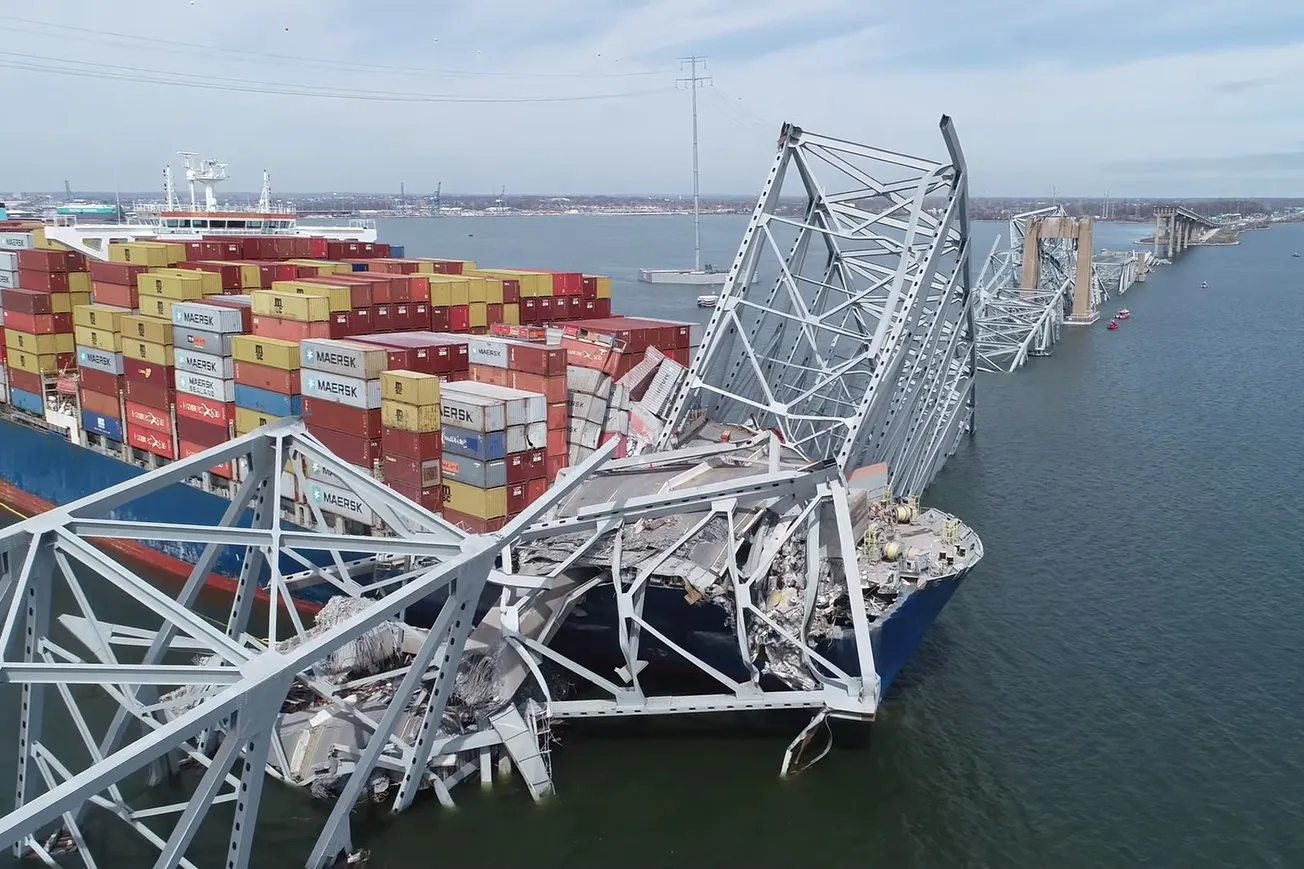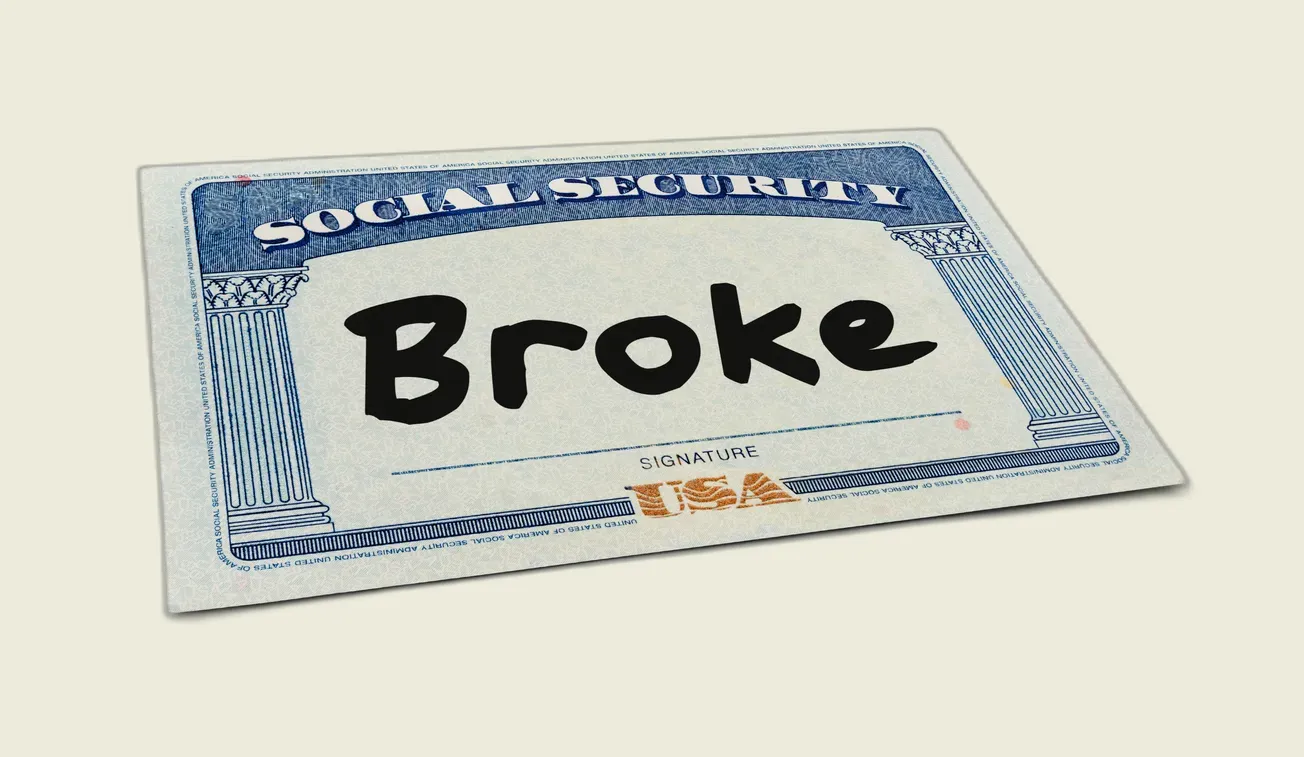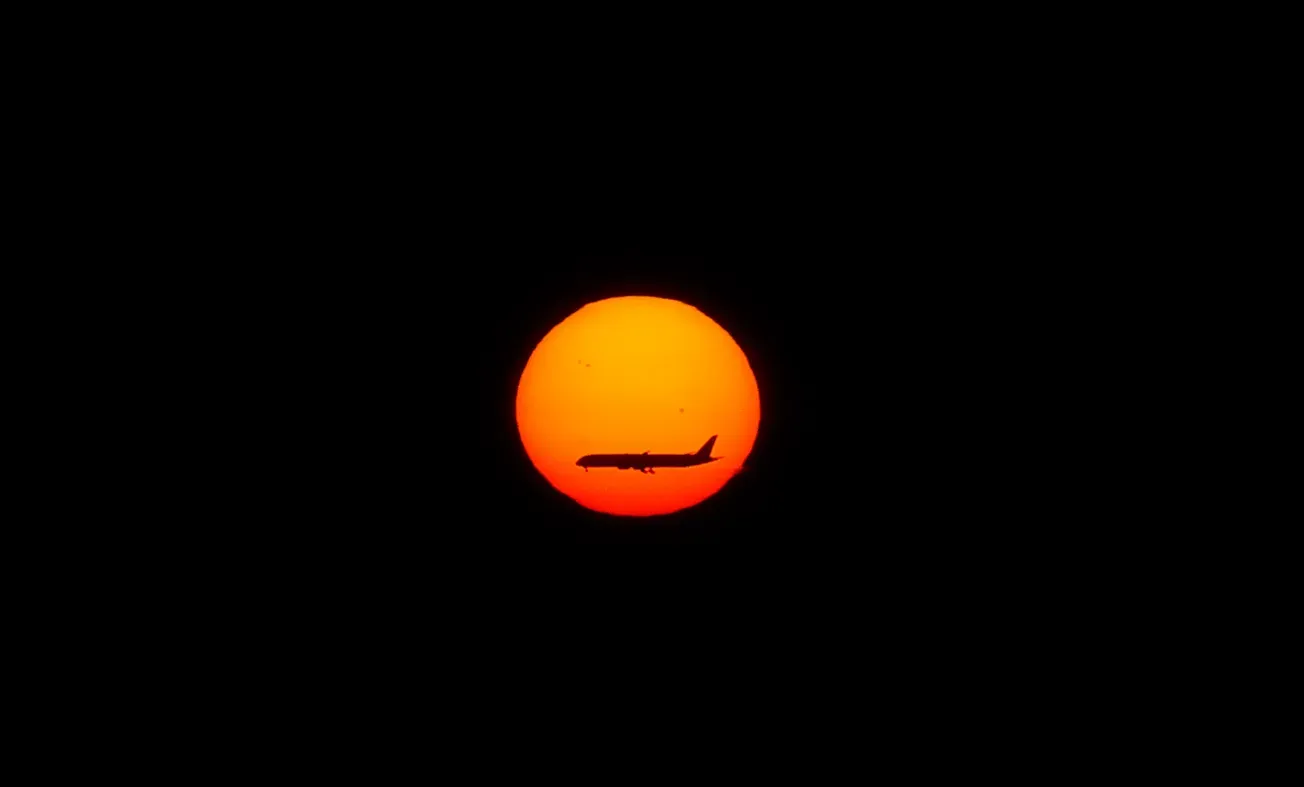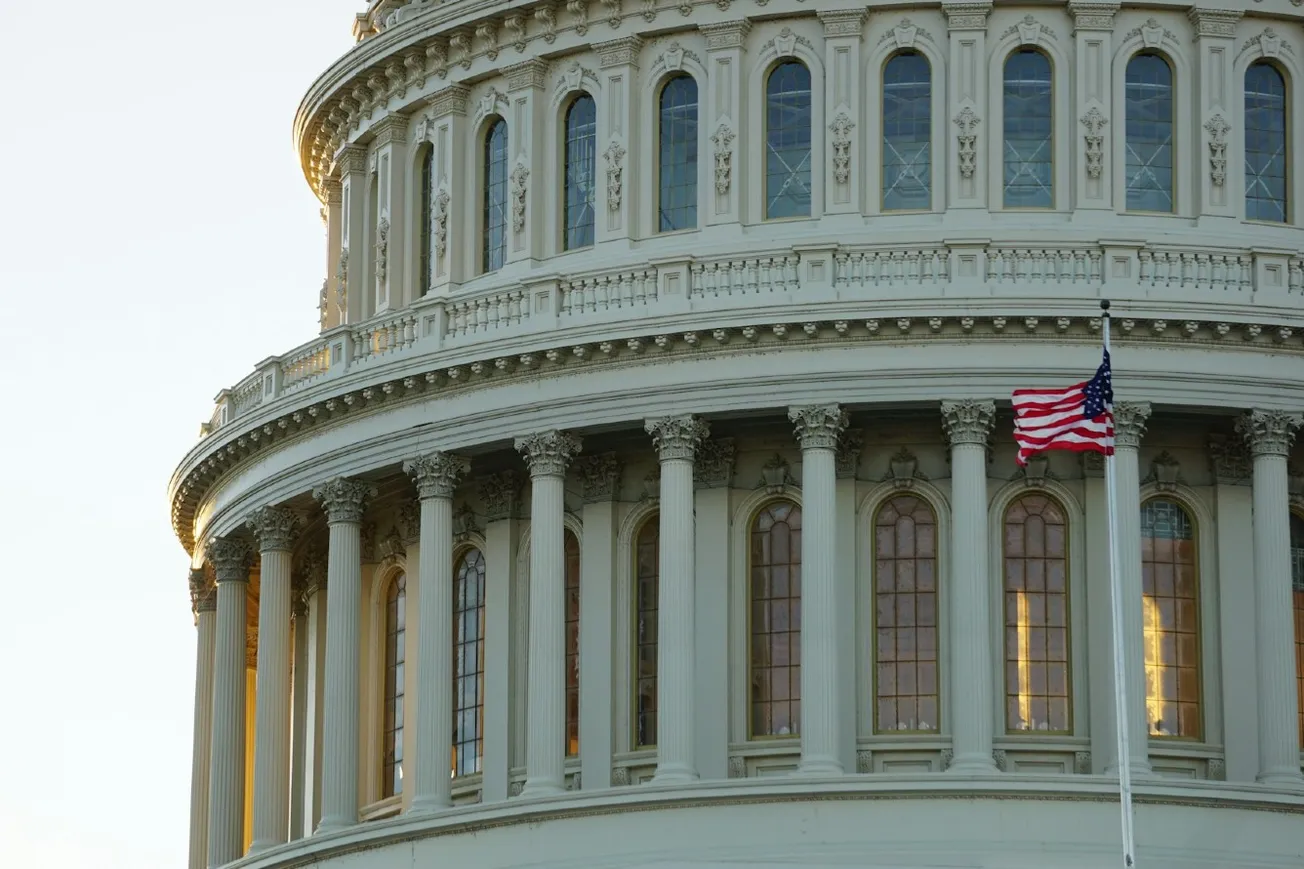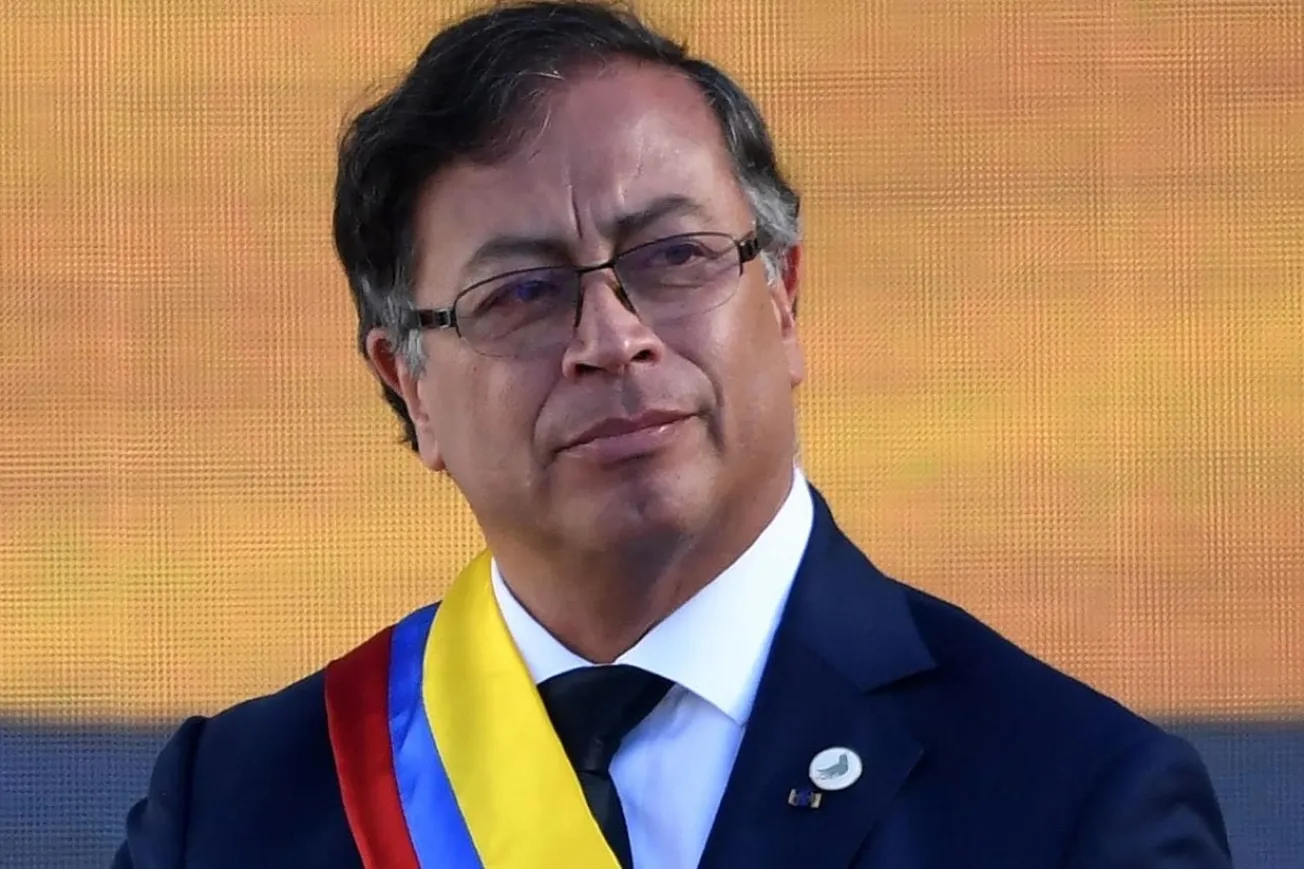- Theories range from space lasers to cyber-attacks by foreign friends and foes
- Just over half accept the official version of the cargo ship losing propulsion
- READ MORE: Baltimore Ravens and Orioles donate $10million to bridge fund
Nearly a quarter of US adults say the Baltimore bridge collapse was not an accident and attribute it to a conspiracy theory, our first-of-its-kind DailyMail.com/TIPP poll shows.
The survey of nearly 1,432 people shows a surprisingly large number of Americans say a plot led to a huge cargo ship crashing into and collapsing the Francis Scott Key Bridge on March 26.
Still, more than half of voters — 55 percent — say the tragedy that claimed six lives was an accident, caused by a huge cargo ship crippled by a power loss ramming into the structure.
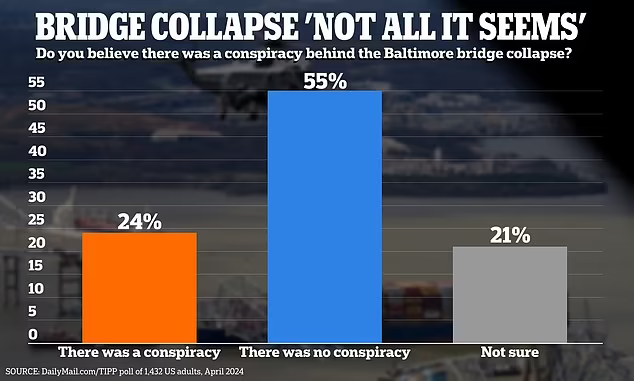
Another 21 percent of respondents said they were not sure.
The survey comes as salvage crews began removing containers from the deck of the Dali cargo ship that crashed, an important step toward reopening a key US shipping lane.
Conspiracy theories about the disaster emerged soon after sections of bridge tumbled into the Patapsco River last month.
Andrew Tate, an online provocateur with more than 9 million X/Twitter followers, posted, without evidence, that the ship was 'cyber-attacked' and deliberately steered into the bridge.
'Foreign agents of the USA attack digital infrastructures,' said Tate, who awaits trial in Romania on charges of rape and human trafficking.
Two hours later, disgraced conspiracy theorist Alex Jones posted a video of the bridge collapse, saying: 'Looks deliberate to me.'
'A cyber-attack is probable. WW3 has already started,' Jones posted, again without evidence.
Gen Mike Flynn, former president Donald Trump's national security adviser, dubbed it a 'BLACK SWAN event.'
The phrase was popularized in the 2000s by a political scientist, but has come to capture the attention of deep state conspiracy theorists.
It trended across social media in the hours after the collapse.
It didn't stop there.
Online pundits also blamed the disaster on the ship's captain being impaired by the side effects of the Covid-19 vaccine.
Others said the vessel was hit and disabled by a high-energy weapon.
Others still blamed the collision on everyone from Ukraine to Israel, China and the Obamas.
Many theorists highlighted the seemingly-odd way the vessel listed calmly through the river and plowed into a support pylon.
Others noted how the vessel's lights switched off before the moment of impact.
Theories were widely shared by devotees of QAnon, an all encompassing political conspiracy theory about a global child sex trafficking ring.
Investigators of the crash, however, are probing more likely causes of the tragedy.
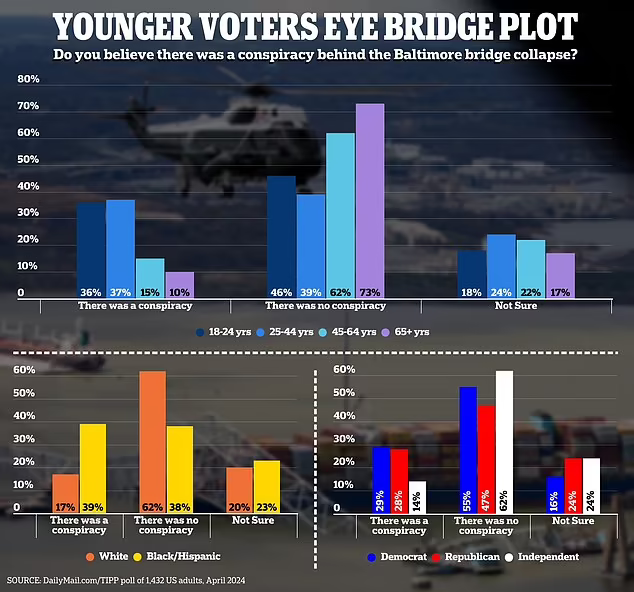
They obtained data from the voyage data recorder — a 'black box' — and await lab results that will help authorities develop a timeline of events.
The 985-foot-long cargo vessel had a power blackout and lost propulsion, leaving the pilots scrambling to control the ship and issuing a mayday call shortly before the moment of impact.
It was traveling at about nine miles per hour, officials said, which is typical in that zone.
Most Americans accept the official version of events at face value.
But close to half of them put it down to a conspiracy theory, or say they just don't know the cause.
Younger people were more likely to call a conspiracy than others.
More than a third of those aged under 45 said as much, compared to just one-in-ten people aged 65 and above.
There was little difference between men and women.
But black and Hispanic people were more than twice as likely as white voters to suspect foul play.
Interestingly, there was little difference between Republican and Democratic voters — close to 30 percent of supporters of the two main parties attributed the disaster to a conspiracy.
The American Psychological Association says people embrace conspiracy theories for a range of personality traits and motivations.
Some rely strongly on their intuition, others feel a sense of antagonism and superiority toward others, the group says.
Others are just very concerned by threats in their environment.
The US Army Corps of Engineers last week announced plans to open a new channel in the Port of Baltimore by the end of April and fully restore access by the end of May.
Authorities are working to recover the bodies of the six construction workers who died in the collapse.
Rescuers had pulled out two additional workers, but the six were presumed dead after an hours-long search.
The bodies of Alejandro Hernandez Fuentes, 35, Maynor Suazo Sandoval, 38, and Dorlian Castillo Cabrera, 26, have been recovered, officials said. The three others are still missing.

